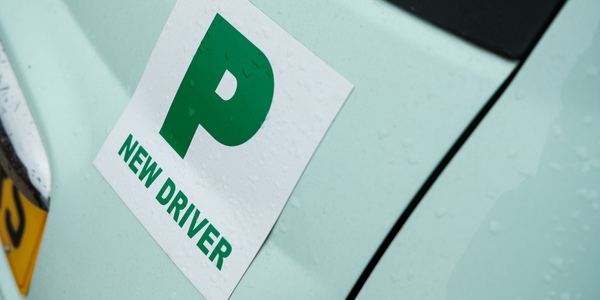
Driving Test Booking Changes For 2025 and 2026
Your guide to the latest driving test booking changes, new DVSA rules and measures aimed at cutting waiting times for learner drivers across the UK.
For anyone learning to drive, understanding the rules of the road is only part of the challenge. Learning to drive also introduces unfamiliar terms, symbols and legal requirements, including the well-known L plates and the lesser-understood P plates. These signs play a significant role in helping other road users recognise your experience level and acts as a bit of a ‘heads-up’ for your driving ability. In this guide, we’ll explore everything you need to know about both L and P plates, including what they are, when to use them, where to display them, and the legal requirements behind each. This will help you have a clearer understanding of how they differ and how to use them correctly as you progress from learner to qualified driver.
These are typically simple square plates (either rigid, magnetic, or adhesive), with a bold letter (“L” in red or “P” in green) on a contrasting white background. Usually, one plate is displayed at the front of the vehicle and one at the rear, so that other road users can clearly see them from both directions.
When you receive L or P plates, they should be placed in obvious, unobstructed positions (not blocking windows or your view). The exact technical specification for L plates is mandated by UK law (see below), for P plates there is more flexibility (since they are optional).
Before you can start practising on the road, you will need to make sure your car clearly displays L plates. They’re the universal signal to other road users that you’re still learning to drive. They are also a legal requirement to have when driving with a provisional licence, so it is important to understand exactly what is expected.

Yes, if you are driving under a provisional licence (i.e. learning to drive), you must display L plates (or in Wales you can use D plates) on your car.
Here are the key legal requirements around L plates in the UK:
Once you have passed your driving test, you can remove L plates, however some drivers choose to replace them with P plates . These plates show that you’ve just qualified and may still be building your confidence on the road.
While P plates are not compulsory, they can help make those first few months behind the wheel a little less stressful, as other drivers will recognise you are still getting used to independent driving.

No, P plates in the UK are not legally required.
Here are the key points around P plates:
In summary, while you do not have to use P plates, new drivers have the option to use these as a courtesy or signalling measure.
Below is a side-by-side comparison of L plates vs P plates:
| Feature / Topic | L Plates | P Plates |
| Mandatory? | Yes, required by law when a learner is driving | No, optional |
| Required format / size | Red “L” on white, 178 × 178 mm, visibility rules, etc. | No legal specs (but most mimic L-plate style) |
| Number / placement | At least two: one front, one rear; clear visibility | If used, best practice is front + rear, not obstructing view |
| When to display | Always when a learner driver is driving the vehicle | If you choose, after you pass your test |
| Removal rules | Must remove or cover when learner not driving (unless driving instructor’s vehicle) | You may remove whenever you feel confident |
| Penalties / consequences | Penalties (points and/or fine) if missing or incorrect L plates | No direct legal penalty for not using, since not compulsory |
| Purpose / significance | Indicates learner status, legally required for supervision | Signifies newly qualified, may encourage patience from others |
Practical Tips & Recommendations:
L plates and P plates play distinct but vital roles in the journey from learner to independent driver in the UK. L plates are legally required for all learner drivers and must follow strict standards in format, placement, and visibility. P plates, on the other hand, are optional. They can be used to communicate your new driver status to other road users, with fewer regulations around size or duration.
By understanding these rules, learners (and their parents/guardians) can avoid penalties, adhere to legal requirements, and help inexperienced drivers begin with confidence.
Commonly asked questions about L Plates & P Plates
No, P plates are not legally required by law in the UK. They are optional and up to the driver.
There is no set time limit for P plates. Drivers can display them if they want to signal that they are newly qualified.
If used, they should be placed front and rear in clear, unobstructed positions, the same as L plates.
Yes, both L and P plates can be magnetic.
Yes, learners must display L plates while driving. They must be red on white, 178 × 178 mm, visible front and back with no obstructions, and removed when the vehicle is not being driven by a learner driver.
You will be logged out in seconds. Do you want to stay signed in?